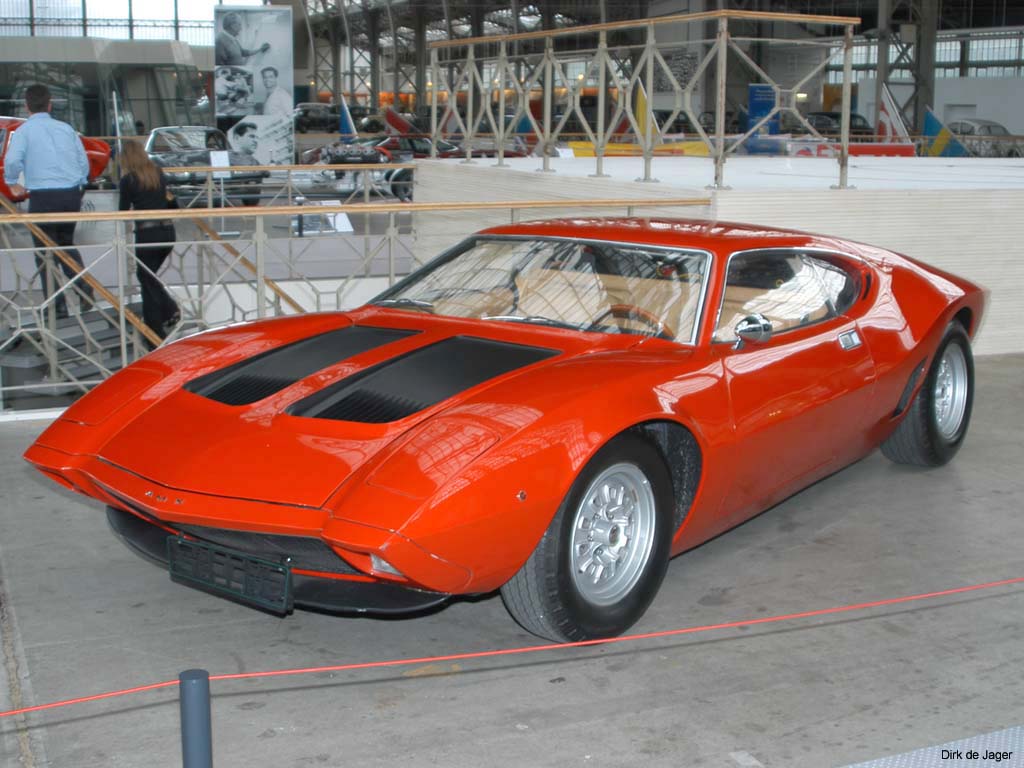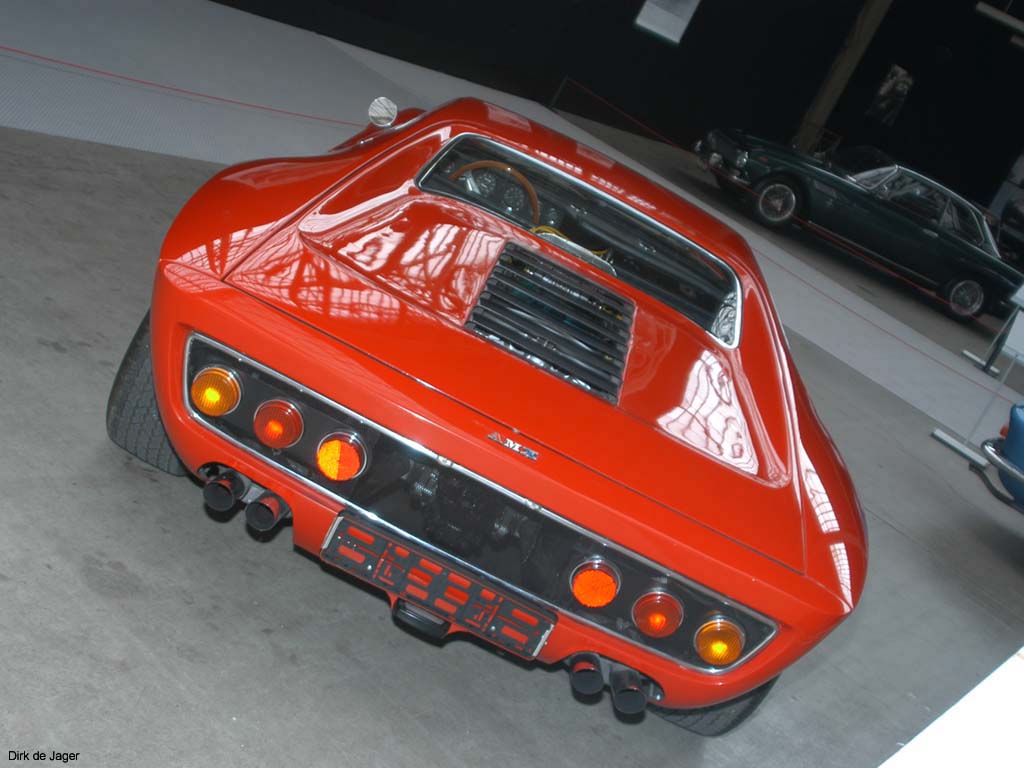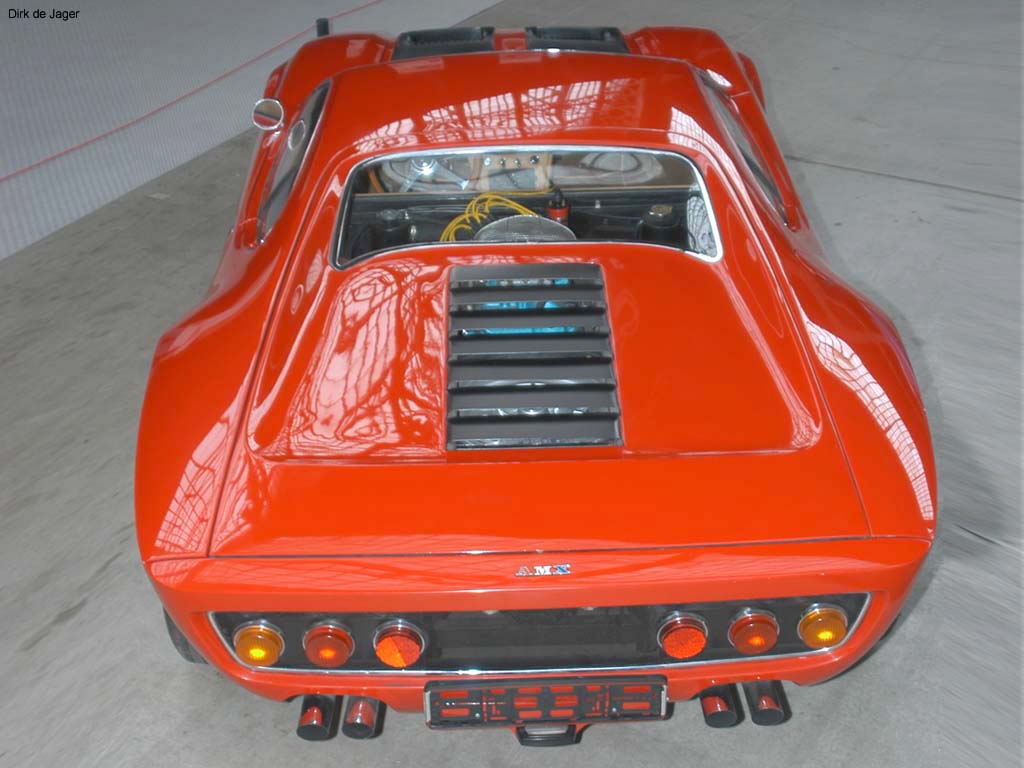1971 American Motors AMX/3
American Motors was one of the surviving and struggling companies that rivaled GM, Ford and Chrysler from 1958 forward. It was the 1954 merger between Nash and Hudson that formed the AMC brand and their first successful car was the Rambler, a distinct family sedan that sold well. So much so, AMC was motivated to drop their previous Nash and Hudson designs and develop the new completely new lines.
AMC’s best years were had with the Rambler and from the 1960s forward, the company saw a steady decline until a merger with Chrysler in 1987. In the meantime, the company made several interesting performance cars including the Hurst SC/Rambler and Javelin which was modified to race the Trans-Am series. AMC attempted to draw on this sporting investment with the AMX, a short wheel base Javelin, having two-seats which was destined to become AMC’s defining sports car.
Enter The Prototypes
AMX production ceased in 1970, and AMC quickly began looking for sophisticated European alternatives to its bulky engineering. Cars like the Gremlin and Pacer were headed in the right direction, but it was the AMX design prototypes which provided more drastic alternatives. As early as 1965, AMC started work on experimental concepts, and used European talent, including Vignale, an Italian coachbuilder, for their first prototype.
Subsequent AMX design concepts were very producible and offered a glimpse at AMC’s future design. The AMX/2, completed in 1969, was a radical design. It was completed in house and was little more than a fibreglass ornament, having no engine or interior.
Bizzarrini’s AMX
Giotto Bizzarrini, of ex-Ferrari fame, was specifically responsible for making a production worthy AMX/3 out of the show queen AMX/2. What would have been a challenging build for AMC, was easily handled by Bizzarrini who was very familiar with race car design and construction, particularly on a tight budget.
Bizzarrini’s final AMC/3 featured the hallmark of sports engineering, a mid-mounted engine and rear transaxle. The Italian firm Melara developed the new gearbox while BMW completed final testing on the roadworthy AMX/3. It seemed AMC was serious about production. From a design standpoint, the AMC/3 was remarkably similar to Ford’s DeTomaso Pantera which debuted just one day after the AMC/3. Such timely releases made it unclear exactly who copied who, but in any case, the casual observer can easily mistake the AMC/3 with a Pantera.
Due to the successful launch, and low price of the Pantera, AMC scrapped the AMX/3 project. Bizzarrini was ordered to destroy all six cars, which he, of course, did not. Instead several cars were finished, some lost, found, sold and lost again. It remains unclear today just how many survive.
Story by Richard Owen for Supercars.net
In Detail
| submitted by | Richard Owen |
| engine | Amercian Motors V8 |
| position | Mid Longitudinal |
| aspiration | Natural |
| displacement | 6383 cc / 389.5 in³ |
| bore | 105.8 mm / 4.17 in |
| stroke | 90.8 mm / 3.57 in |
| compression | 10.0:1 |
| power | 253.5 kw / 340 bhp @ 5100 rpm |
| specific output | 53.27 bhp per litre |
| bhp/weight | 242.51 bhp per tonne |
| torque | 583.0 nm / 430 ft lbs @ 3600 rpm |
| body / frame | Steel Semi-Monocoque |
| driven wheels | RWD |
| front tires | 205-15 |
| rear tires | 225-15 |
| front brakes | ATE Ventilated Discs |
| f brake size | mm / in |
| rear brakes | ATE Ventilated Discs |
| r brake size | mm / in |
| front wheels | F 38.1 x 16.5 cm / 15 x 6.5 in |
| rear wheels | R 38.1 x 22.9 cm / 15 x 9 in |
| steering | Power Assist |
| f suspension | A-Arms w/Coil Springs, Tube Shocks, Anti-Roll Bar |
| r suspension | A-Arms w/Coil Springs, Tube Shocks, Anti-Roll Bar |
| curb weight | 1402 kg / 3090 lbs |
| wheelbase | 2675 mm / 105.3 in |
| front track | 1539 mm / 60.6 in |
| rear track | 1554 mm / 61.2 in |
| length | 4460 mm / 175.6 in |
| width | 1902 mm / 74.9 in |
| height | 343 mm / 13.5 in |
| transmission | Melara 4-Speed Transaxle |
| gear ratios | :1 |
| final drive | 3.45:1 |
| top speed | ~257.5 kph / 160.0 mph |











